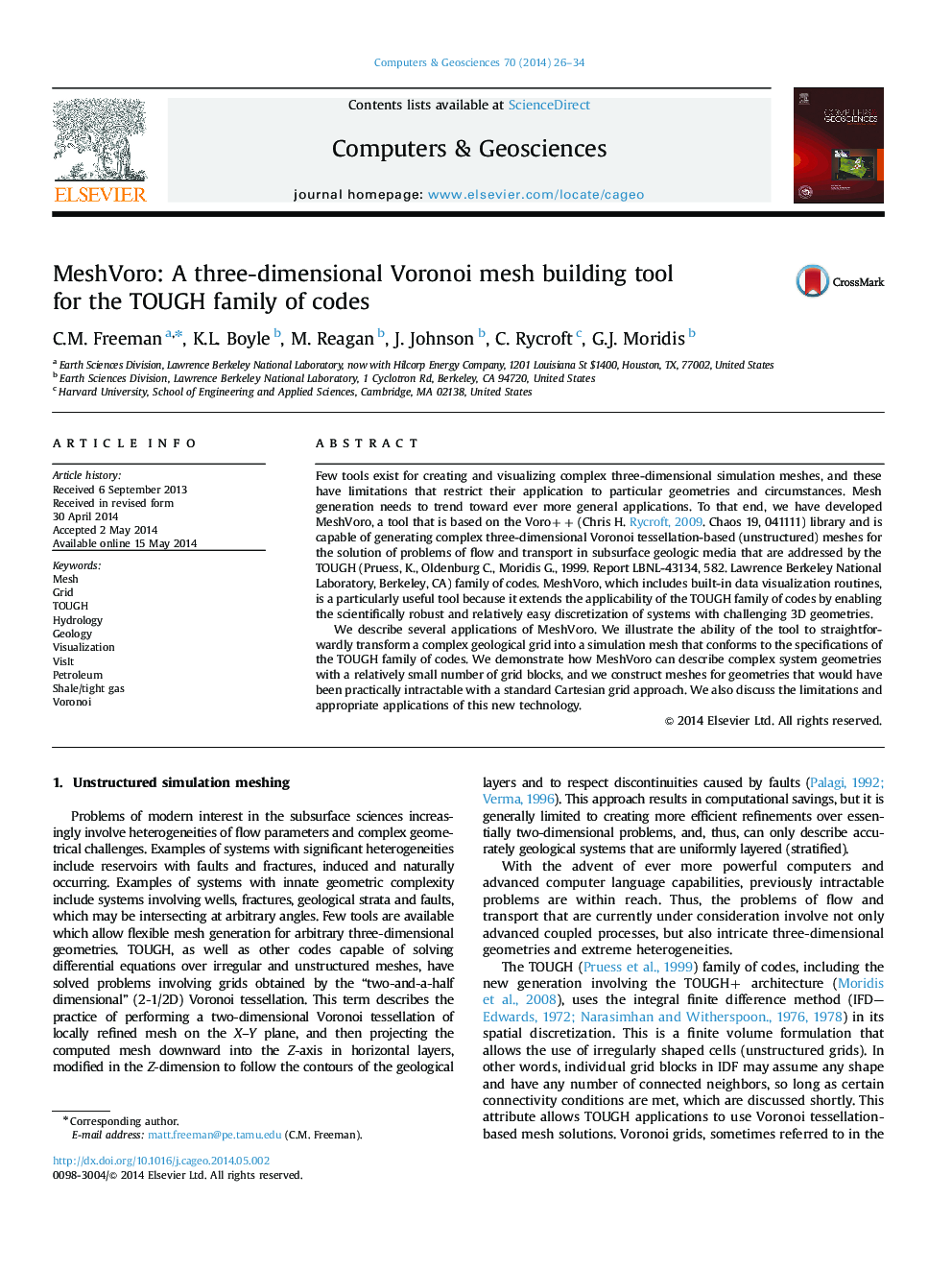| Article ID | Journal | Published Year | Pages | File Type |
|---|---|---|---|---|
| 507205 | Computers & Geosciences | 2014 | 9 Pages |
•Literature review of existing techniques in unstructured meshing.•Development of three-dimensional unstructured meshing tool for TOUGH codes.•Application of novel unstructured meshing tool to a variety of challenging subsurface flow problems.•New strategies, techniques and heuristics to avoid common pitfalls in unstructured three-dimensional mesh generation.
Few tools exist for creating and visualizing complex three-dimensional simulation meshes, and these have limitations that restrict their application to particular geometries and circumstances. Mesh generation needs to trend toward ever more general applications. To that end, we have developed MeshVoro, a tool that is based on the Voro++ (Chris H. Rycroft, 2009. Chaos 19, 041111) library and is capable of generating complex three-dimensional Voronoi tessellation-based (unstructured) meshes for the solution of problems of flow and transport in subsurface geologic media that are addressed by the TOUGH (Pruess, K., Oldenburg C., Moridis G., 1999. Report LBNL-43134, 582. Lawrence Berkeley National Laboratory, Berkeley, CA) family of codes. MeshVoro, which includes built-in data visualization routines, is a particularly useful tool because it extends the applicability of the TOUGH family of codes by enabling the scientifically robust and relatively easy discretization of systems with challenging 3D geometries.We describe several applications of MeshVoro. We illustrate the ability of the tool to straightforwardly transform a complex geological grid into a simulation mesh that conforms to the specifications of the TOUGH family of codes. We demonstrate how MeshVoro can describe complex system geometries with a relatively small number of grid blocks, and we construct meshes for geometries that would have been practically intractable with a standard Cartesian grid approach. We also discuss the limitations and appropriate applications of this new technology.
